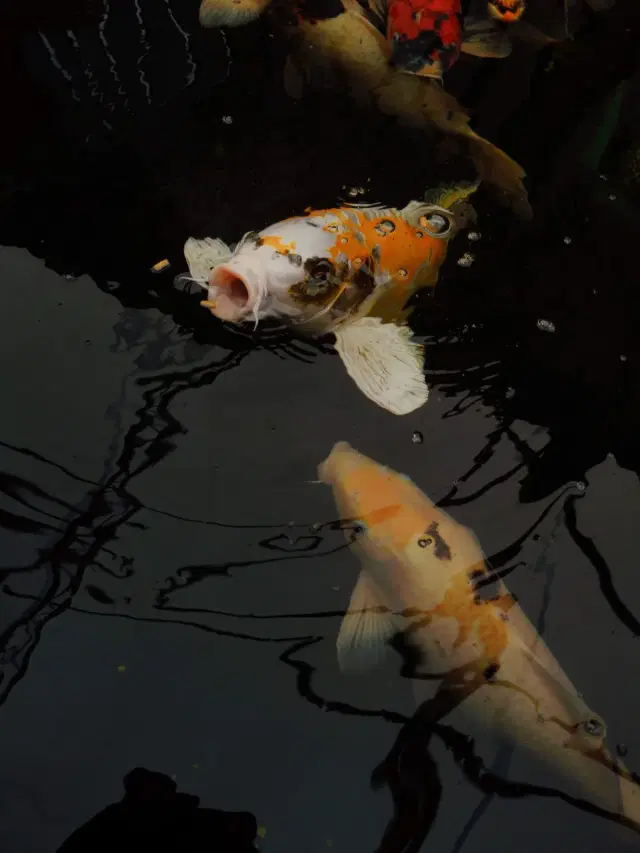Homemade Fish Food Guide
Paying attention to what you feed your fish and how much you provide them is important.

Published on:
Author:Aquadecor
Creating the perfect aquarium with colorful fish and a natural-looking environment is just the beginning. To keep your fish healthy and thriving, it’s essential to feed them a balanced, species-appropriate diet.
While beginners may rely on commercial flakes, experienced aquarists understand that proper nutrition is far more nuanced.
Choosing the Right Food
Before making your own fish food, it's important to understand the different types available and the dietary needs of your fish.
Dry Food
Flakes, granules, and pellets are common and convenient. They come in both sinking and floating varieties. While dry food provides essential nutrients, it typically contains less fiber and can expand in the fish’s stomach, potentially leading to digestive problems. It should be used in moderation and complemented with other food types.
Frozen Food
Frozen options like shrimp, plankton, mussels, or spirulina cubes (for herbivores) are nutritious and widely available in pet stores.
Live Food
Includes brine shrimp, feeder fish, crickets, and worms. These are great for predatory species but should be offered in moderation to avoid introducing parasites.
Greens
Many herbivorous and omnivorous fish enjoy vegetables like spinach, zucchini, cucumber, and lettuce. Attach them to the tank with clips or place them on the substrate, but always remove uneaten food within 24 hours.
Why Make Homemade Fish Food?
- More control over ingredients
- Cost-effective
- Tailored nutrition based on species
- No artificial preservatives
Most ingredients can be found in your kitchen, and recipes can be customized to suit your fish’s specific dietary needs.
Understanding Fish Diet Types
- Herbivores – Eat only plant matter (e.g., plecos).
- Omnivores – Eat both plant and animal-based food (e.g., goldfish, tetras).
- Carnivores – Eat only meat, including other fish and invertebrates (e.g., discus).
Vegetables in Fish Nutrition
Vegetables are a great addition to most fish diets, especially for herbivores and omnivores. Recommended options include:
- Spinach, kale, zucchini, carrots, broccoli
- Small amounts of apple and pear (watch sugar content)
- Garlic (boosts appetite and health, acts as a natural antibiotic)
Avoid:
- Bread – expands in the stomach and causes constipation
- Uncooked rice – provides little nutrition and can also expand dangerously
Meat in Fish Nutrition
Fish, shrimp, mussels, squid, and other seafood are excellent protein sources. Earthworms are highly nutritious but should be store-bought to avoid contamination.
Important:
Remove all visible fat from meat, as high-fat diets can damage a fish’s liver. Live or fresh food should be consumed within 5 minutes to prevent rot.
Making Homemade Fish Food
What You’ll Need
- Blender (dedicated for fish food)
- Kitchen scale
- Sharp knife
- Saucepan
- Ice cube trays
- Plastic wrap or airtight containers
Freeze food in cubes for easy portioning. Properly stored, homemade food can last for months.
Homemade Fish Food Recipes
1. For Herbivores
Ingredients:
- 140g spinach
- 140g cucumber
- 140g peas
- 140g oatmeal
- 280g gelatin
Instructions:
Blanch vegetables, blend until smooth, mix with oatmeal, and add prepared gelatin. Freeze in trays.
2. For Omnivores
Ingredients:
- 70g garlic
- 400g dark leafy greens (spinach, broccoli)
- 1 cup water
- 70g seafood
- 270g gelatin
- 1 drop fish vitamins
Instructions:
Blend blanched greens, garlic, and seafood. Add gelatin and vitamins. Freeze in trays.
3. For Carnivores
Ingredients:
- 140g white fish
- 140g shrimp
- 140g vegetables (carrot, cauliflower, broccoli)
- 270g gelatin
Instructions:
Blend blanched vegetables and seafood, mix with prepared gelatin, and freeze.
4. High-Protein Mix (Great for Young Fish)
Ingredients:
- 200g salmon
- 1000g raw shrimp (no tails)
- 500g frozen peas
- 500g spinach
- 300g carrots
- 2 garlic cloves
- 550g gelatin
Instructions:
Blend all ingredients. Simmer with gelatin over low heat for ~45 minutes. Cool and freeze.
5. For Discus Fish
Ingredients:
- 1kg cleaned beef heart (no fat/arteries)
- 700g white fish
- 500g cleaned shrimp
- 300–400g green vegetables
Instructions:
Blanch vegetables, blend with seafood and heart meat. No gelatin needed due to beef texture. Freeze in trays.
Final Thoughts
Making homemade fish food is a simple, rewarding way to improve your aquarium’s health and save money. With a bit of preparation and experimentation, you can provide your fish with a diverse, nutritious diet that boosts their health, vitality, and color.

